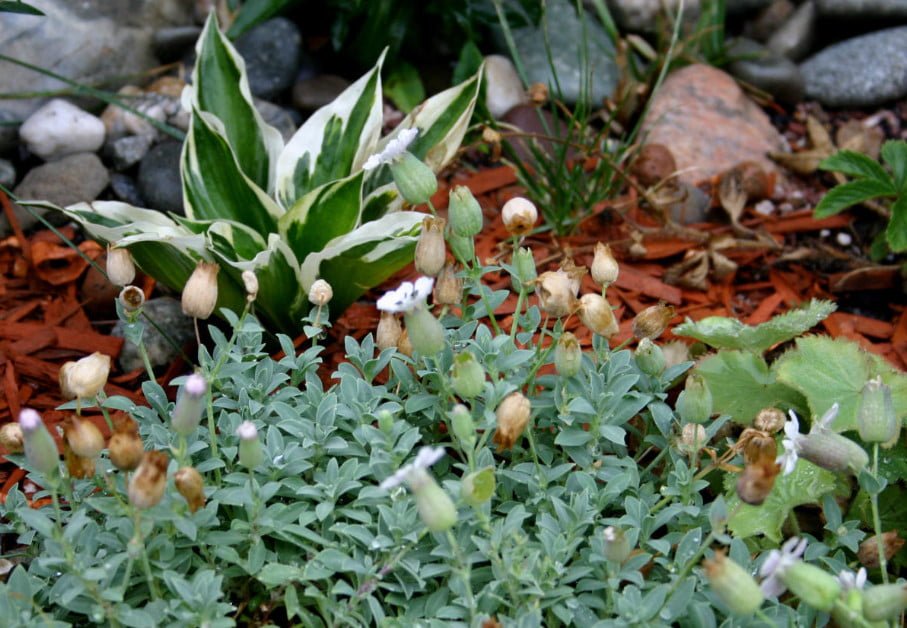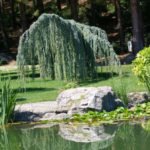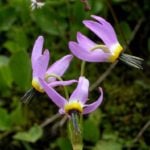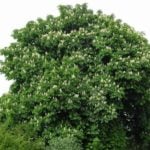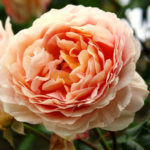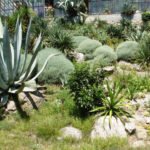After a review of the best plants for solar rockery present to your attention the top ten species for semi-shaded rocky garden.
We will meet with well-known species, paying special attention to their forms and varieties, and with rare plants.
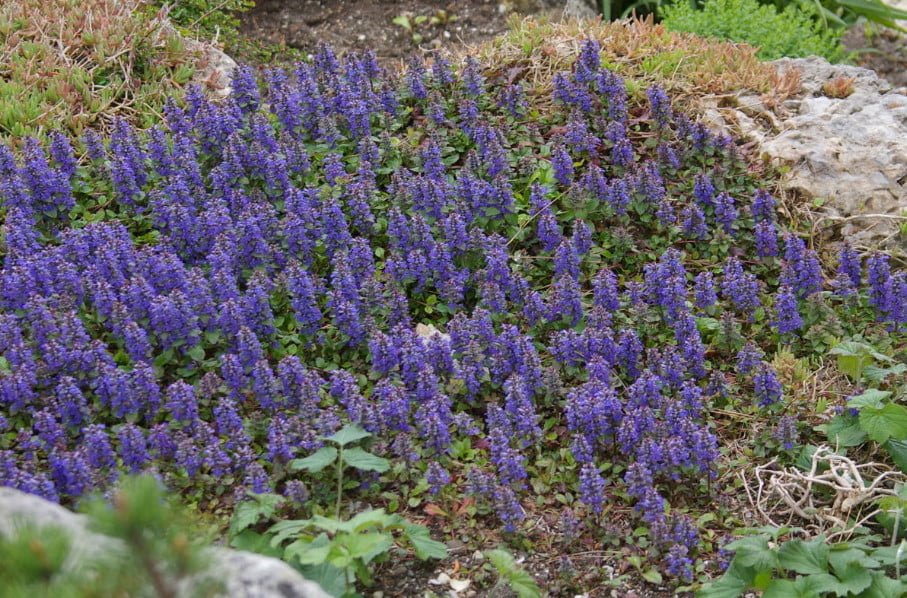
Some of them form clumps, growing rapidly in breadth (usually it is groundcover). Others charm with beautiful rosettes of leaves and spectacular flowers, inflorescences.
So, we meet the top ten plants for rockery in partial shade.
Bergenia
Today he is at the Zenith of glory, extremely popular in shaded areas of cottages.
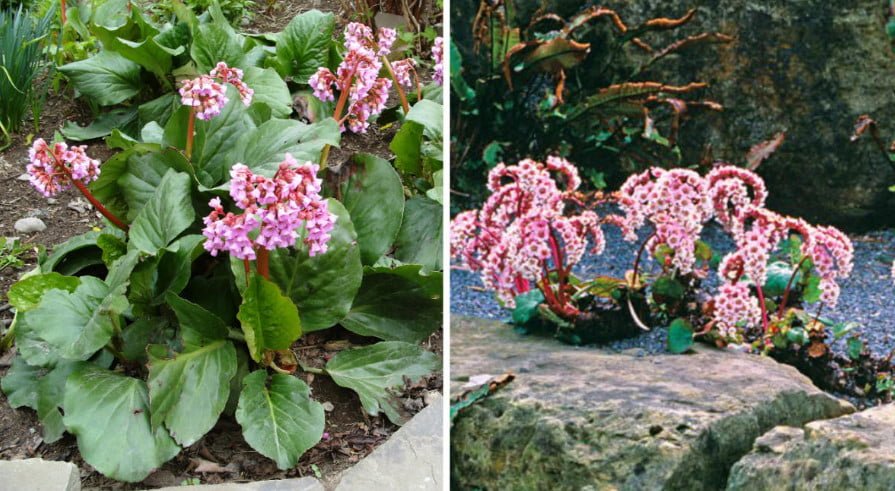
Under this name are hidden species:
- Bergenia crassifolia;
- B. ciliata;
- B. purpurascens;
- B. x schmidtii;
- B. stracheyi, varieties and hybrids.
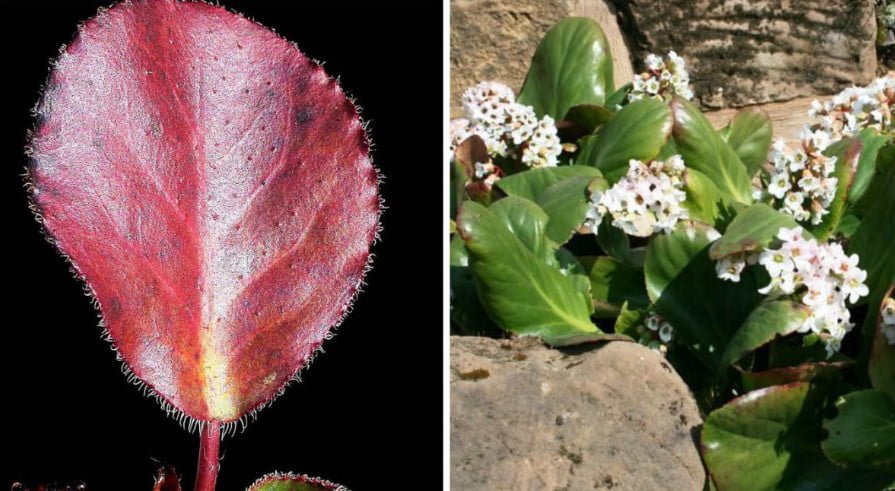
Bergenia is unpretentious: they grow in one place for a long time without any problems. Their root system is shallow, so transplanting and rejuvenation of the division well tolerated. Hardy.
Wulfenia
As a rule, in culture grow 2 species.
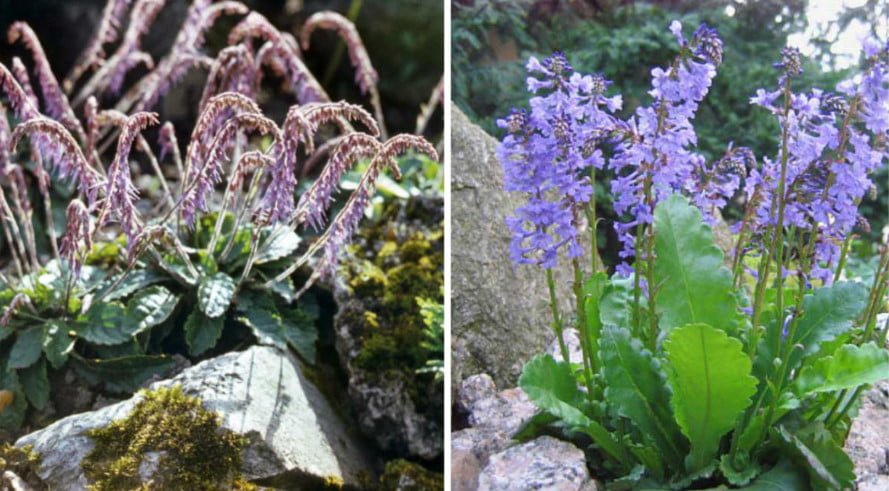
Wulfenia amherstiana and W. carinthiaca – evergreen rhizomatous perennial with a height and a width of 20-25 cm, the First native of Afghanistan, the second – from the South-East of the Alps, Albania. A big plus Wulfenia– lack of aggressiveness in terms of the acquisition of territory. Both form a beautiful neat curtain of rosettes of oblong leaves. The flowers are small, purple-pink, gathered in spike-shaped inflorescences; bloom in early summer. Prefer non-acid loamy soil, with openwork shading look decorative; transplantation is well tolerated, they are easily propagated by seeds (without pre –sowing preparation) and vegetative division. Better in the winter shelter spruce branches.
Heuchera
Great in partial shade Heuchera micrantha and H. sanguinea. The current wealth of their varieties, hybrids with beautiful Burgundy, silver leaves allows you to meet the needs of the most fastidious gardeners.
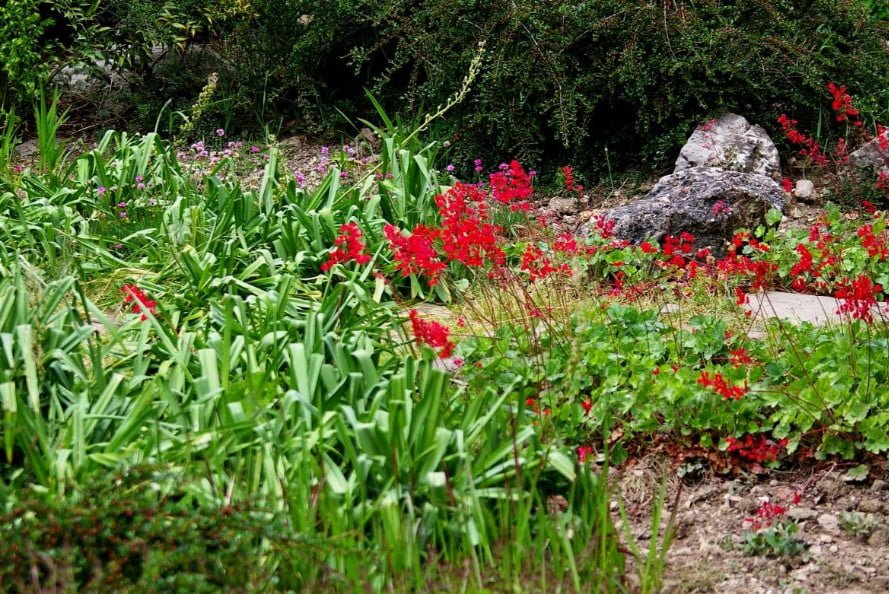
Grow well in prepared places, seasoned with fertile soil; propagated by seeds and vegetatively. Preferably for the winter shelter spruce branches.
Geranium
If there is an ideal plant for rockery in partial shade, to which even the most demanding critic will not have any claims, it is Geranium macrorhizum.
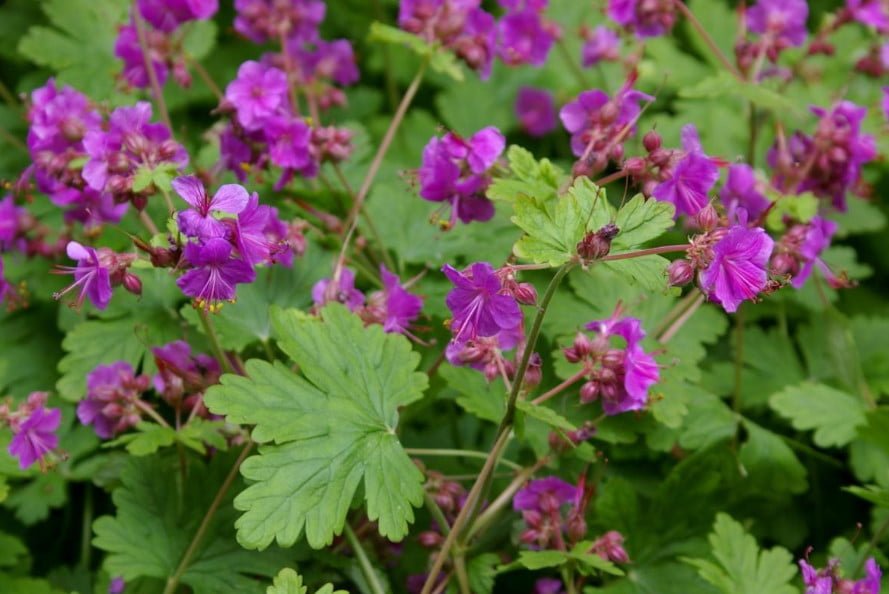
Everything is harmonious: beautiful evergreen leaves, average height (about 20-40 cm) and width (up to 60 cm), very spectacular pink flowers. To control the growth by using the border tape.
Jeffersonia dubia
An interesting representative of the family Berberidaceae comes from the North-East Asia.
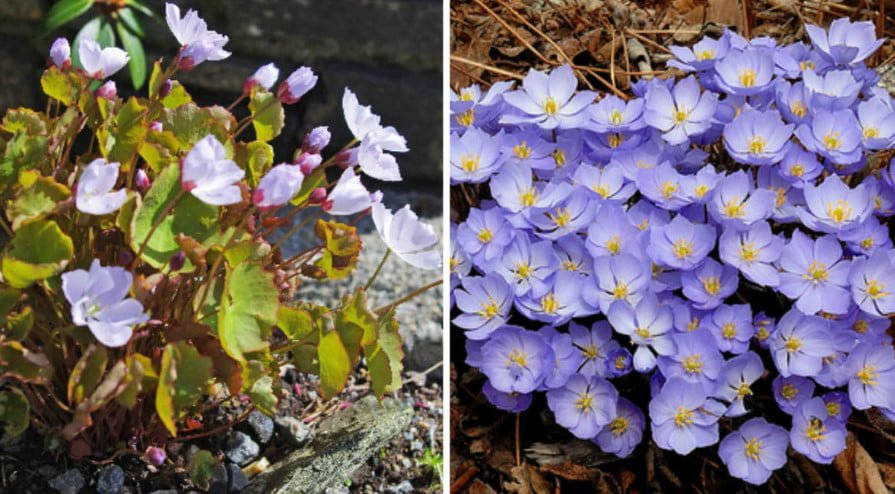
Jeffersonia dubia is a compact rhizomatous perennial to 20 cm and width up to 15 cm with Beautiful kidney-shaped bluish-green leaves with a diameter up to 10 cm Flowers are bluish-purple, of a width up to 3 cm, blooming in the spring, before the leaves. It is not capricious to the soil, long without problems growing in one place, in the hot and dry summer needs watering. Propagated by division (transplant carries easily), sometimes gives self-seeding.
Dicentra
These luxurious representatives of the family Fumarioideae not for a small rockery in the shade, but for a larger one.
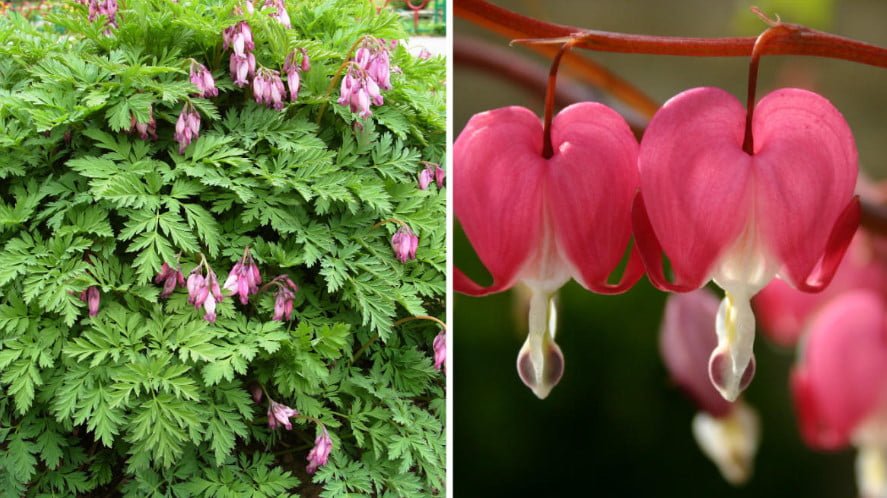
Dicentra formosa, D. spectabilis-unpretentious perennials with openwork leaves and peculiar flowers in the shape of a heart, collected in a brush on a bare peduncle; bloom from late spring. Unpretentious, but bloom best in fertile loose soils, lack of rain need watering, and are propagated by division in winter the places of the landings mulch humus.
Ajuga reptans
In the semi-shaded rockery you can not do without it.
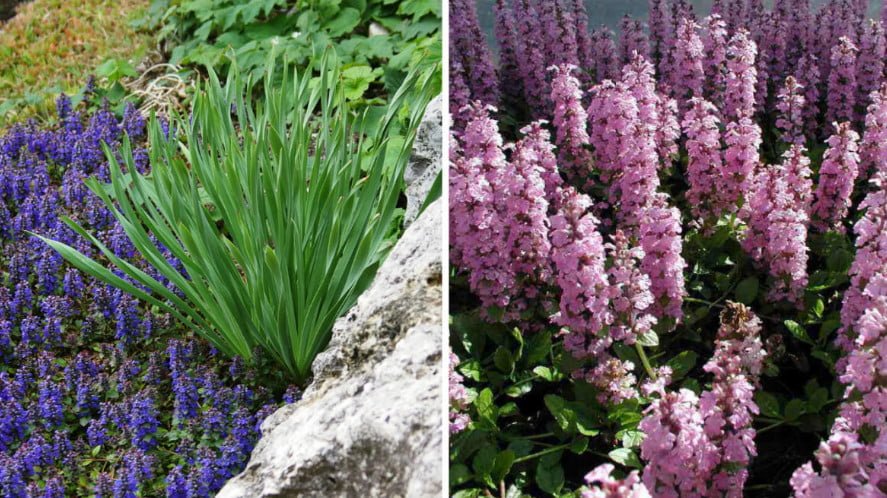
Ajuga reptans during flowering (may) gives purple “clouds” (grade ‘Pink Elf’ – pink), and its varieties form colorful “living spots” throughout the growing season, increasing the color in the fall.
Decorative types and varieties:
- a silvery-green Mat with a wine-red tint can be obtained by planting ‘Burgundy Glow’;
- dark bronze-purple stain will give ‘Catlin’s Giant’;
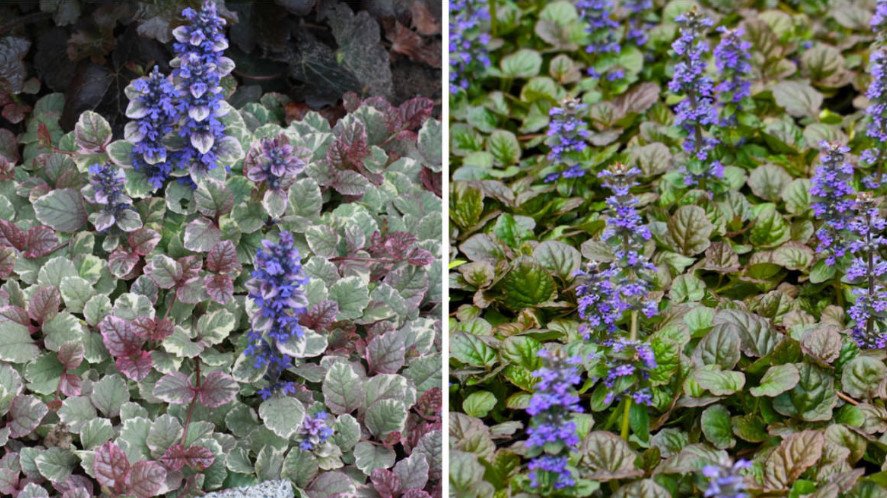
- mottled flaps form ‘Multicolor’, syn. ‘Rainbow’ and ‘Variegata’.

In addition to Ajuga reptans, in the rocky gardens of this location, you can settle her relatives:
- A. genevensis-height 20-40 cm and width 45 cm or its varieties;
- A. pyramidalis-15-25 cm and a width of 45-60 cm or its decorative variety ‘Metallica Crispa’ (height 15 cm and a width of 30-40 cm, leaves greenish-purple, with a metallic sheen).
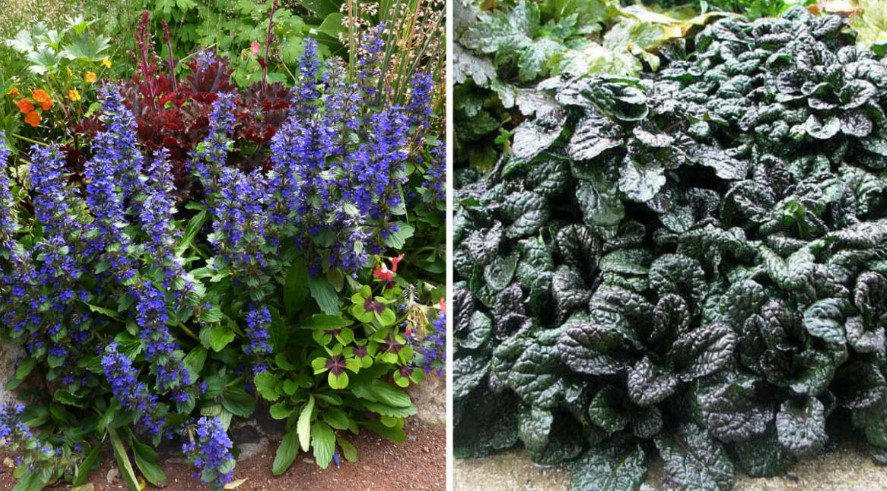
For Ajuga need control, as it quickly spreads in all directions, so it is desirable immediately when planting to limit it with a curb tape.
Saxifraga
Among the shade-tolerant species is: Saxifraga umbrosa var. primuloides from Pyrenees and S. urbium. The first forms a compact outlet height and tire 30 cm, gives a dense curtain. The leaves are oval, up to 8 cm of Small white flowers with red spots, in panicles up to 25 cm; blooming in mid-summer.
Decorative variety:
- ‘Clarence Elliott’ – compact, height and width of 15 cm, leaves up to 6 cm

The second-a hybrid height of 30 cm in width grows to infinity, similar to the previous view. Interesting its variegated form ‘Variegata’.
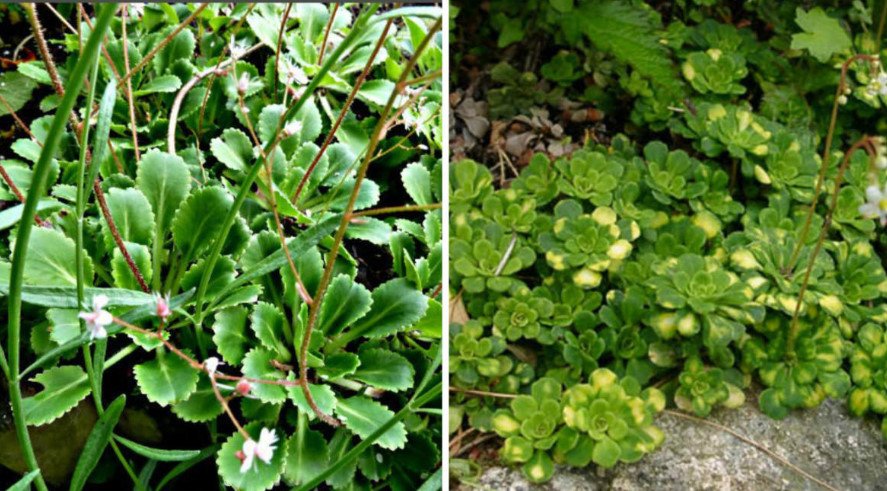
Pachysandra terminalis
Pachysandra terminalis is a low evergreen perennial of the family Buxaceae from Northern China, Japan. Its parameters: height 20 cm, width grows to infinity. Dark green leaves 10 cm long white Flowers, 2-3 cm long, collected in small spikelets; bloom in early summer.
Decorative varieties:
- ‘Green Carpet – – height 15 cm, width 60 cm, leaves up to 7 cm;
- ‘Variegata’ – height 25 cm, width 60 cm, leaves with a white border.
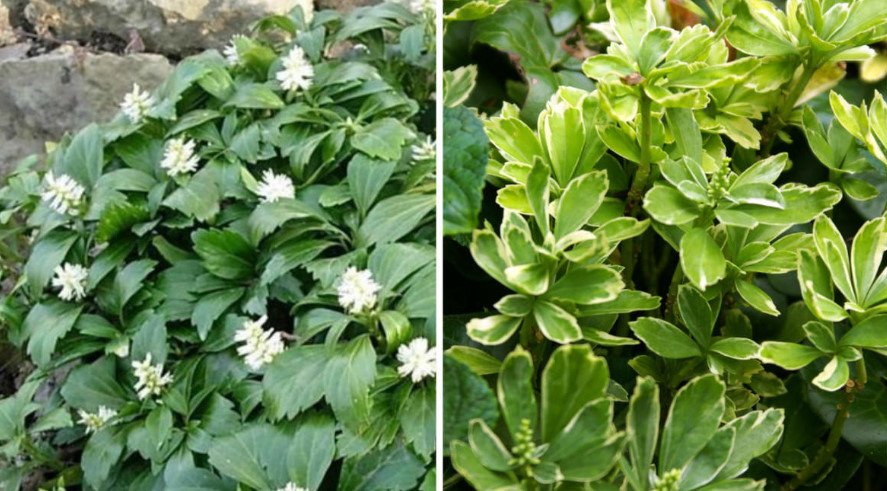
Unpretentious, luxurious clumps form in shady places, and even its variegated form feels better in partial shade. Undemanding to soils on loose drained will be more decorative. Relatively drought-resistant: hot and dry summer must be watered. In the middle lane in the winter is well to cover it with spruce branches.
Hosts
A good choice for a semi-shaded rockery. For a deeper shade preferred varieties with green leaves, but in the openwork will feel good even variegated varieties.
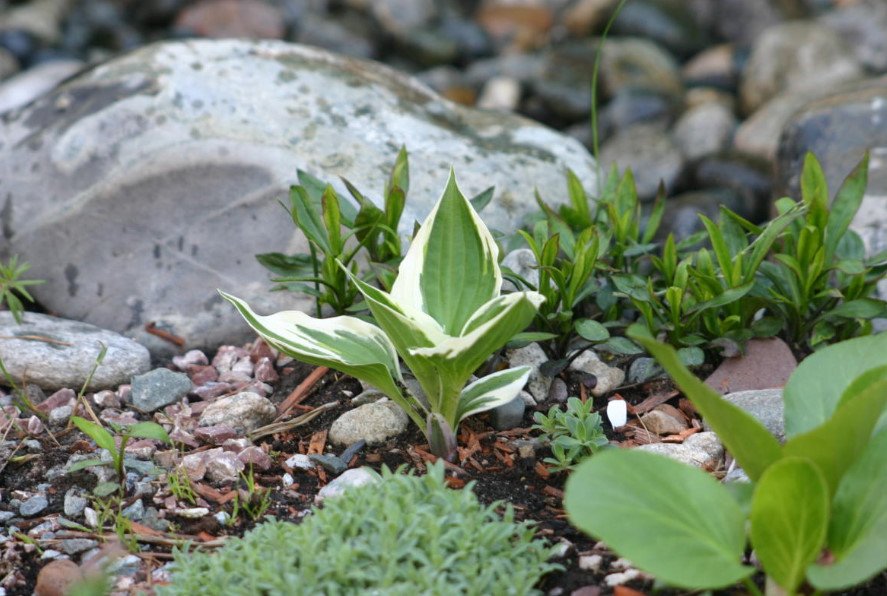
In addition, in the partial shade of the rocky garden will feel good:
- Vinca;
- Anemone;
- Bistorta affinis;
- Duchesnea indica;
- Oxalis;
- Cotula;
- Convallaria;
- Allium paradoxum;
- Alchemilla vulgaris;
- Omphalodes;
- Violai others.
And what plants grow in your rocky garden in partial shade?
